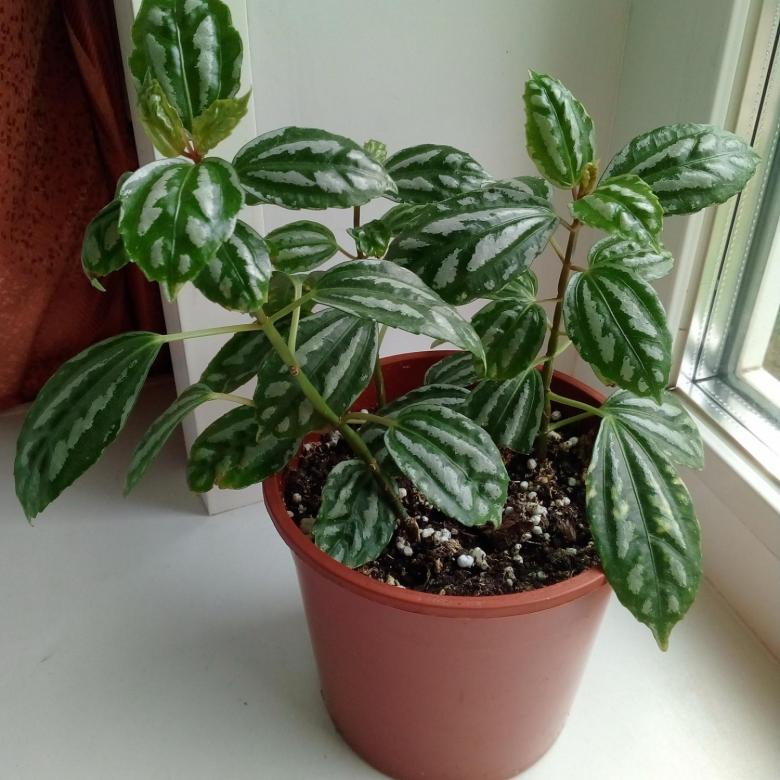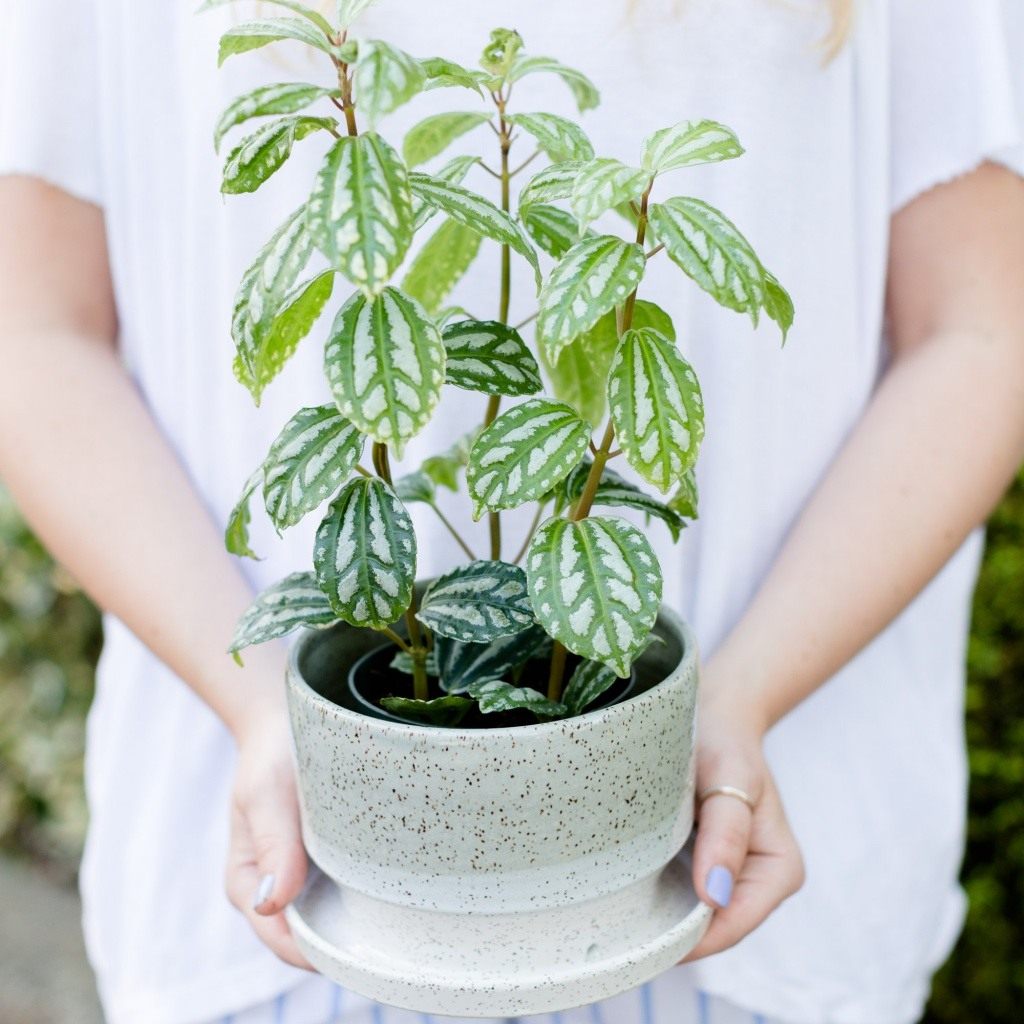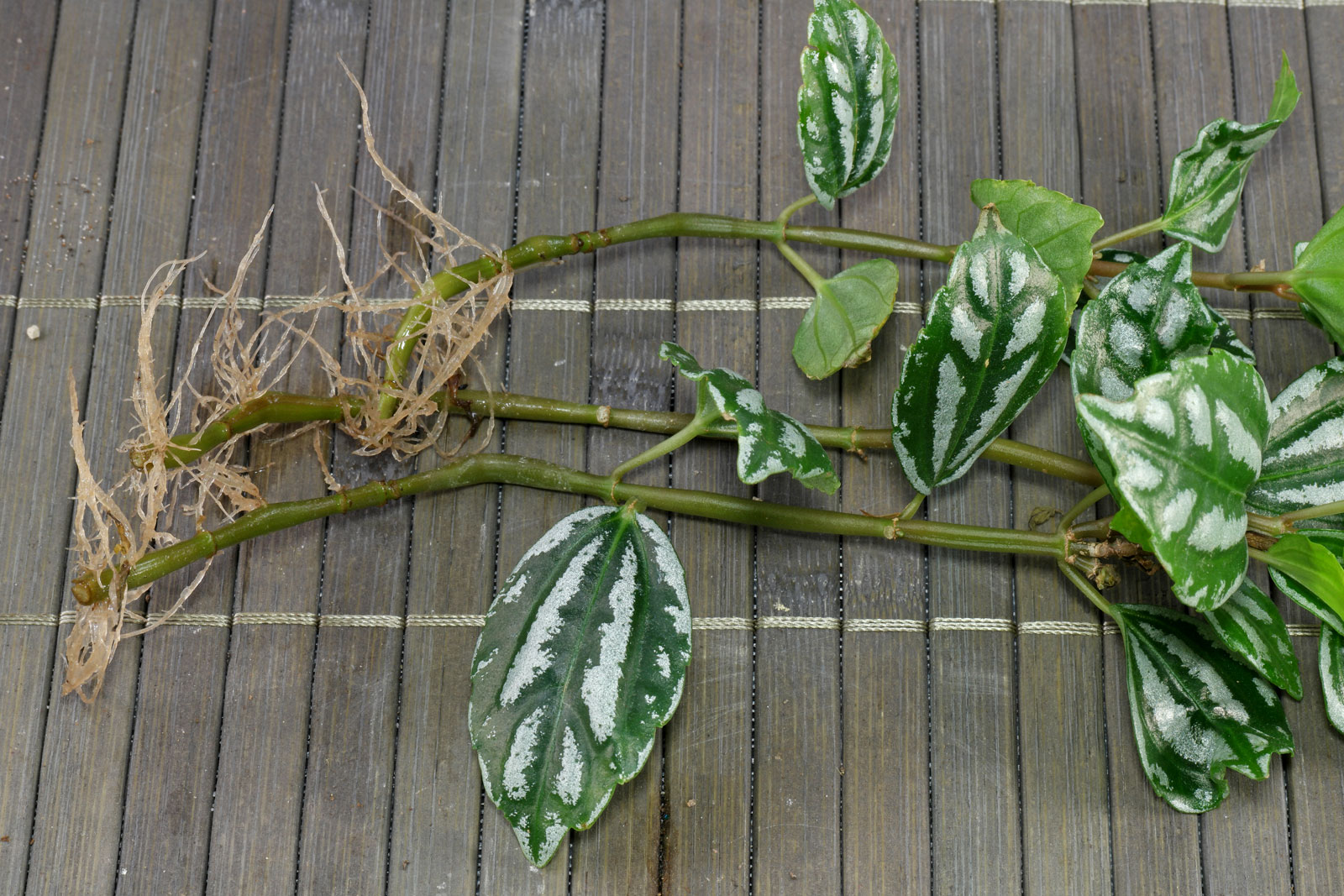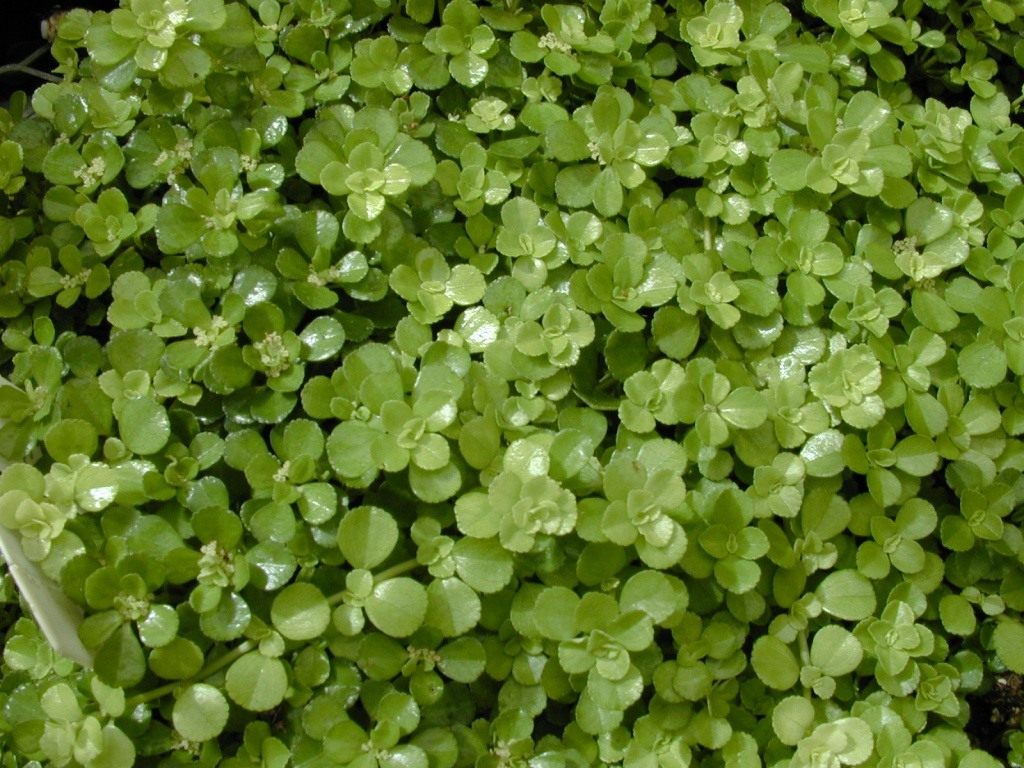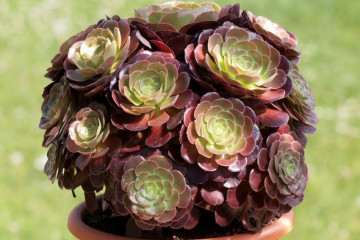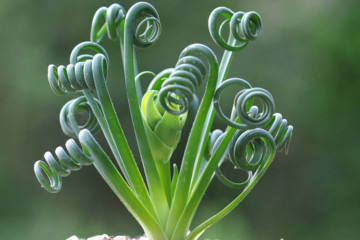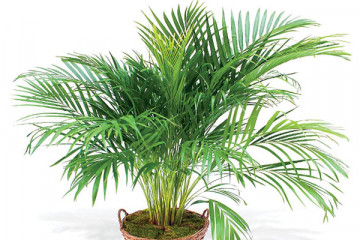Pilea Kadier, Kadiera, pressed, Alumi - home care
Content:
This plant is a species of perennial evergreen herbaceous crops belonging to the Pilea genus, which belongs to the Nettle family. The wild growing culture is found in China, Indochina and Vietnam. The Kadje variety is valued for its unusual color of leaves and unpretentiousness. The article will discuss what this saw is: home care, reproduction, a description of the appearance, diseases and pests.
What does the pilea Kadier look like?
The height of the shoots ranges from 30 to 40 cm. The stems at the base are very thin, erect at first, but over time they bend and become highly branching. Leaves can be lanceolate or oval, oppositely arranged on petioles. The plate is about 8 cm long and 5 cm wide. The leaf surface is shiny, rough to the touch, the color is dark green with two large convex silvery stripes. The lines run on both sides of the median vein, divided into fragments by green areas. The edges of the leaves are also framed by convex silvery blotches. The glossy color is emphasized by the fact that the shape of the plates has a curved appearance.
Growing at home
In care, the saw is undemanding, therefore it is not particularly difficult in the process of growing at home.
Basic rules for growing
Recommended indoor temperatures are from 20 ° C to 24 ° C (in the summer season). The minimum winter parameters are 15 ° С.
Culture needs bright, diffused lighting. Direct rays are detrimental to the flower. The best place for a pilea is the east or west window. If this is not possible, the south side will also work, but on condition that the flower is at a distance from the window or covered with a translucent material.
Lack of lighting leads to the loss of the bright color of the foliage. In summer, the flower can be taken out to the balcony, but on condition that the plant is protected from direct sunlight.
In winter, as well as when there is a lack of natural light in cloudy weather, the saw needs additional lighting.
1-2 weeks after the plant has adapted to the microclimate, it should be moved to another container with a new substrate.
During the period of active growth and development, the flower must be fed with liquid universal fertilizer. In winter, the frequency of feeding is reduced to 1 time in 30 days.
Priming
The plant prefers neutral or slightly acidic soil, rich in nutrients. The mixture can be purchased at the store (soil for decorative leafy plants) and add vermiculite or perlite to it, or prepare the soil yourself. In the latter case, you will need:
- humus;
- leafy soil;
- peat land;
- coarse sand.
The listed ingredients are taken in a 2: 2: 1: 1 ratio, combined and thoroughly mixed. Before planting the saw, a high-quality drainage layer is laid on the bottom of the pot.
The soil mixture should be light and loose in order to allow air and moisture to pass through well.
Transfer
The procedure for young specimens is carried out every year with the onset of spring, adults are propagated and re-grown. A drainage layer consisting of expanded clay or brick chips is laid at the bottom of the pot. The thickness of the layer should be 1.5-2 cm. It is recommended to combine the transplant with pinching and pruning.
You can plant the sawtooth in the same container with other crops, creating compositions. The flower gets along well with ferns, fittonia, peperomia (small-leaved species). The similarity of these plants lies in almost the same content and cultivation.
Pot selection
The capacity should correspond to the structure of the root system of the flower. The roots of this culture are rather weak, compact, shallow. Therefore, the pot should be selected small (depth from 7.5 to 10 cm), wide with drainage holes.
Air humidity and watering
Kadier does not belong to moisture-loving flowers, therefore excess moisture is especially harmful (moisture stagnant in the pot can lead to waterlogging of the soil and rotting of the roots). The culture tolerates short-term drying out of the soil well.
Watering is carried out regularly and abundantly with clean water (filtered or settled). So much time should pass between the procedures so that the earth has time to dry out a little.
The culture feels good in conditions of high humidity. However, it is undesirable to spray the flower, since water droplets leave ugly streaks on the surface of the leaves. To increase the level of humidity, expanded clay is added to the pan of the pot and moistened regularly.
Actions during the flowering period
Experts recommend cutting the flowers after their formation, because the pilea blooms inconspicuously. Thanks to this procedure, the plant receives additional strength for growth and development (they do not need to be spent on the ovary of flowers and maintaining them in a normal state).
Pinching and trimming
Since the pilea Kadje grows intensively, the bush will soon lose its aesthetic appearance. To prevent this, it is necessary to pinch the tops of the stems once every 2-3 weeks.
In the spring, all the shoots are pruned so that the length of the rooted stems is 8-10 cm.
Propagation of pilea by cuttings
It is recommended to propagate the flower by stem cuttings in spring or summer. 7-10 cm cuttings should have three internodes. Seedlings are placed in loose soil, sand or in a container with water. Then they are covered with a glass jar (or wrapped in polyethylene), thereby creating a greenhouse environment. The cutting leaves should not touch the walls of the vessel.
Several processes can be placed in one jar at once. Saplings are placed in a warm place where there is no access to direct sunlight. As soon as the roots appear, the jar can be removed and the young plant can be left in this form for one week. The container is then transferred to a suitable location. The grown shoots are transplanted into individual pots and begin to care for them according to the standard scheme.
Possible difficulties
Problems that may arise when growing a crop are the result of errors in the content:
- foliage wrinkles and begins to crumble under conditions of too high or too low air temperatures, as well as with a long period between waterings (the flower begins to dry from lack of moisture);
- the leaves turn black and fall off, the lower part of the shoots rots. The reason is excessive watering;
- yellow and brown spots appear on the leaves. The reason is direct sunlight;
- lack of light leads to tarnishing of silvery stripes on the leaves, as well as to crushing of leaves and stretching of shoots;
- if the shoots are bare (the lower part of the stems is losing foliage), this means that the plant needs rejuvenation.
Diseases and pests: table
| Symptoms | Cause | Solution |
| The plant is entangled with a thin web, the leaves wither, crumble. | Spider mite. Favorable conditions for its distribution are a dry environment. | Wipe the flower with soapy water, rinse under a warm shower, treat with an attelik. |
| The foliage dries out a lot and begins to fall off. It is very difficult to return the plant to its previous appearance. | Shield | Treat the sawtooth with attelik or phytoverm. |
| The outer surface of the leaves is covered with a large number of dots of a light shade. | Thrips | The means are the same as in the previous case. |
| The plant is covered with a white bloom, like flour. A sticky translucent bloom (honeydew) appears on the tissues of the pylaea, and the flower becomes lethargic. | Mealybug | The plant must be washed with soapy water, then treated with insecticides (actara, phytoverm). |
Popular varieties
This culture is not loved for its abundant flowering, although at home the buds appear very rarely. This usually happens in the summer season. The flowers are small, white, monochromatic, collected in dense inflorescences. Against the background of bright foliage, they are almost invisible.
The following varieties are in greatest demand among florists:
Pilea Kadiera
The height of the stems can reach 40 cm. Over time, they begin to branch. Leaves are oval in shape with a pointed tip and three veins. Other popular names for the species are silver saw, an aluminum plant, which were given to it for its spectacular coloration. The bright green (or bluish green) foliage surface is covered with two wide, intermittent stripes of a silvery shade.
Saw pressed
Leaves are light green, small, numerous. Bushes are squat, curly.
Pilea Alumi
The foliage is painted in a deep green color, has a wrinkled, terry surface with veins of a crimson hue.
Other popular varieties of pylaea include:
- monetary;
- thick-leaved;
- wrapped;
- peperomial;
- Lebanese;
- small-leaved;
- creeping.
Kadje is one of the most common types of pylaea, famous for its variegated leaf color. The plant is unpretentious, so even a beginner can cope with its content. Knowing what the Kadier saw is - home care, cultivation, reproduction - will help you successfully cope with the task.
